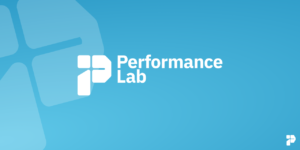In the dynamic world of website management, optimizing WordPress performance is a perpetual pursuit. With the relentless demand for faster loading times and seamless user experiences, webmasters are constantly seeking innovative solutions to enhance their websites’ efficiency. Redis Object Cache emerges as a potent tool in this endeavor, promising to catapult WordPress websites to new heights of speed and responsiveness.
Unveiling Redis: The Ultimate Caching Solution
At the heart of Redis lies its prowess as a key-value database, adept at swiftly handling high-level data structures such as strings, hashes, and sets. While Redis finds applications across diverse domains, its caching capabilities stand out as exemplary, particularly within the realm of WordPress.
Rethinking Caching Dynamics
Traditional paradigms of website caching often entail a direct interaction between the user’s request and the database, leading to potential bottlenecks under heavy traffic. Redis revolutionizes this process by leveraging the server’s RAM to store data, circumventing the need for repeated database queries. Consequently, the retrieval of cached data occurs at lightning speed, ensuring unparalleled efficiency even during peak usage periods.
Navigating Hosting Considerations
However, the seamless integration of Redis Object Cache hinges upon a crucial prerequisite – compatible hosting infrastructure. Prior to implementation, meticulous verification of hosting support for Redis is imperative. Shared hosting plans, characterized by resource pooling among multiple websites, may pose limitations on Redis functionality due to constrained access to dedicated RAM.
Implementing Redis Object Cache: A Step-by-Step Guide
Step 1: Installing the Redis Object Cache Plugin
The journey towards optimized caching commences with the installation of the Redis Object Cache plugin. A seamless process awaits, wherein a mere click of the “Install Now” button followed by activation sets the stage for enhanced caching capabilities.
Step 2: Activating Object Cache
Upon activation, a brief configuration process ensues, culminating in the activation of the Object Cache. Subsequent options for cache management, including flushing and disabling cache, empower users with granular control over caching operations.
Step 3: Exploring Metrics for Performance Insights
Delving deeper, the Metrics tab unveils invaluable insights into caching performance metrics, encompassing time, bytes, ratio, and calls. This data, albeit intricate, furnishes webmasters with actionable intelligence to fine-tune caching strategies for optimal results.
Validating Performance Gains
In the relentless pursuit of performance optimization, validation assumes paramount importance. Leveraging tools such as Google PageSpeed Insights and GTMetrix, webmasters can quantify the tangible gains derived from Redis Object Caching. Armed with comprehensive performance analytics, informed decisions can be made to further refine website efficiency.
Embracing Speed as the Ultimate Imperative
In the digital landscape where user expectations reign supreme, speed emerges as the ultimate differentiator. Beyond mere SEO enhancements, accelerated loading times wield profound implications for user retention and satisfaction. Redis Object Cache epitomizes a potent ally in this quest for speed, empowering WordPress websites to transcend performance barriers and deliver unparalleled user experiences.
Conclusion: A Paradigm Shift in WordPress Performance Optimization
As the digital ecosystem continues to evolve, the imperative for performance optimization remains unwavering. Redis Object Cache heralds a paradigm shift in WordPress caching, offering a potent blend of efficiency, scalability, and simplicity. By embracing Redis, webmasters embark on a transformative journey towards unlocking the true potential of their WordPress websites.




